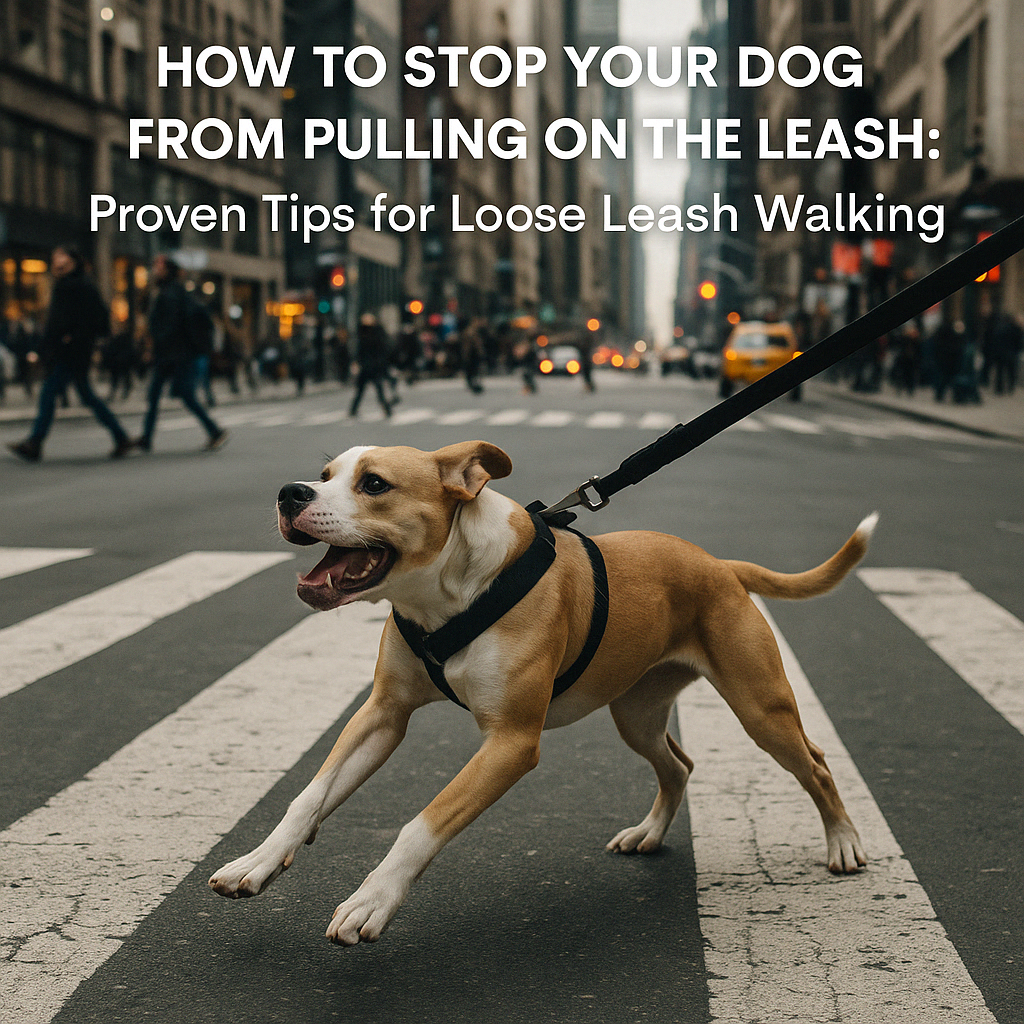
How to Stop Your Dog from Pulling on the Leash: Proven Tips for Loose Leash Walking
Walking Shouldn’t Be a Tug-of-War
Does your dog drag you down the street like they’re leading a sled team? You’re not alone. Leash pulling is one of the most common challenges dog owners face. But the good news is: it can be fixed — with the right gear, the right training, and a little consistency.
In this post, we’ll break down exactly how to stop your dog from pulling on the leash using proven loose leash walking tips — and which tools can help make it happen faster.
Why Dogs Pull on the Leash
Pulling isn’t your dog being “bad” — it’s often instinct. Some common reasons include:
- They’re excited and overstimulated
- They’ve never been taught to walk beside you
- They’ve learned that pulling gets them where they want to go
Dogs naturally move faster than humans and follow their nose. If they’ve gotten used to dragging you, they don’t realize there’s a better, more rewarding way to walk.
What Is Loose Leash Walking?
Loose leash walking means your dog walks by your side on a relaxed leash — no pulling, no tension, no constant corrections. It’s one of the most valuable skills you can teach and it makes walks safer, calmer, and more enjoyable for both of you.
Step-by-Step: How to Train Loose Leash Walking
1. Use the Right Equipment
Before training, make sure your gear sets you up for success. A regular collar can put too much pressure on your dog’s neck when they pull — and won’t help redirect them.
Instead, use:
- A no-pull harness with a front clip to redirect forward motion
- A strong leash that gives you grip and control
Recommended Gear:
- ✅ UniMax Multi-Purpose Harness – comfortable, secure, and no-pull design
- ✅ Extra Heavy-Duty Biothane Leash – waterproof, tangle-free, ultra-strong
- ✅ Multi-Purpose Biothane Leash (7+ Ways to Use) – train, walk, and secure with one tool
2. Stop When They Pull
This is key. Every time your dog pulls — stop immediately. Don’t yank back. Just freeze. When the leash slackens or your dog checks in with you, reward them and continue walking.
Dogs learn: pulling = no progress.
3. Change Direction Often
Keep your dog engaged by unpredictably turning. If they surge forward, turn and go the opposite way. This teaches them to stay focused on you instead of charging ahead.
4. Reward the Right Position
Carry treats or praise cues. When your dog walks beside you with a loose leash, reward them often — especially early in training. Make being close to you the best place to be.
5. Keep Sessions Short and Fun
Loose leash walking is a skill built over time. Practice for 5–10 minutes in quiet areas before tackling exciting parks. End sessions on a positive note — not a frustrated one.
Loose Leash Walking Mistakes to Avoid
- ❌ Using a retractable leash (teaches pulling)
- ❌ Jerking the leash or yelling
- ❌ Expecting perfect results on Day 1
- ❌ Skipping rewards — dogs need motivation!
Real Results Come with the Right Gear
Training works best when combined with the right leash and harness. At NexaPaw, we designed our gear to give you control without compromising your dog’s comfort.
🦴 Try These for Better Walks:
- UniMax Multi-Purpose Harness – padded, adjustable, and escape-resistant
- Extra Heavy-Duty Biothane Leash – durable for strong pullers
- 7-in-1 Multi-Function Biothane Leash – great for training, walking, or hands-free use
Final Thoughts
Loose leash walking isn’t a quick fix — but it’s absolutely achievable with consistency and the right tools. You don’t need to struggle through every walk. Once your dog learns that pulling doesn’t pay off and that walking near you brings rewards, it’ll feel like a whole new experience.
So take a breath, grab the right gear, and enjoy the process. Happy walking!

